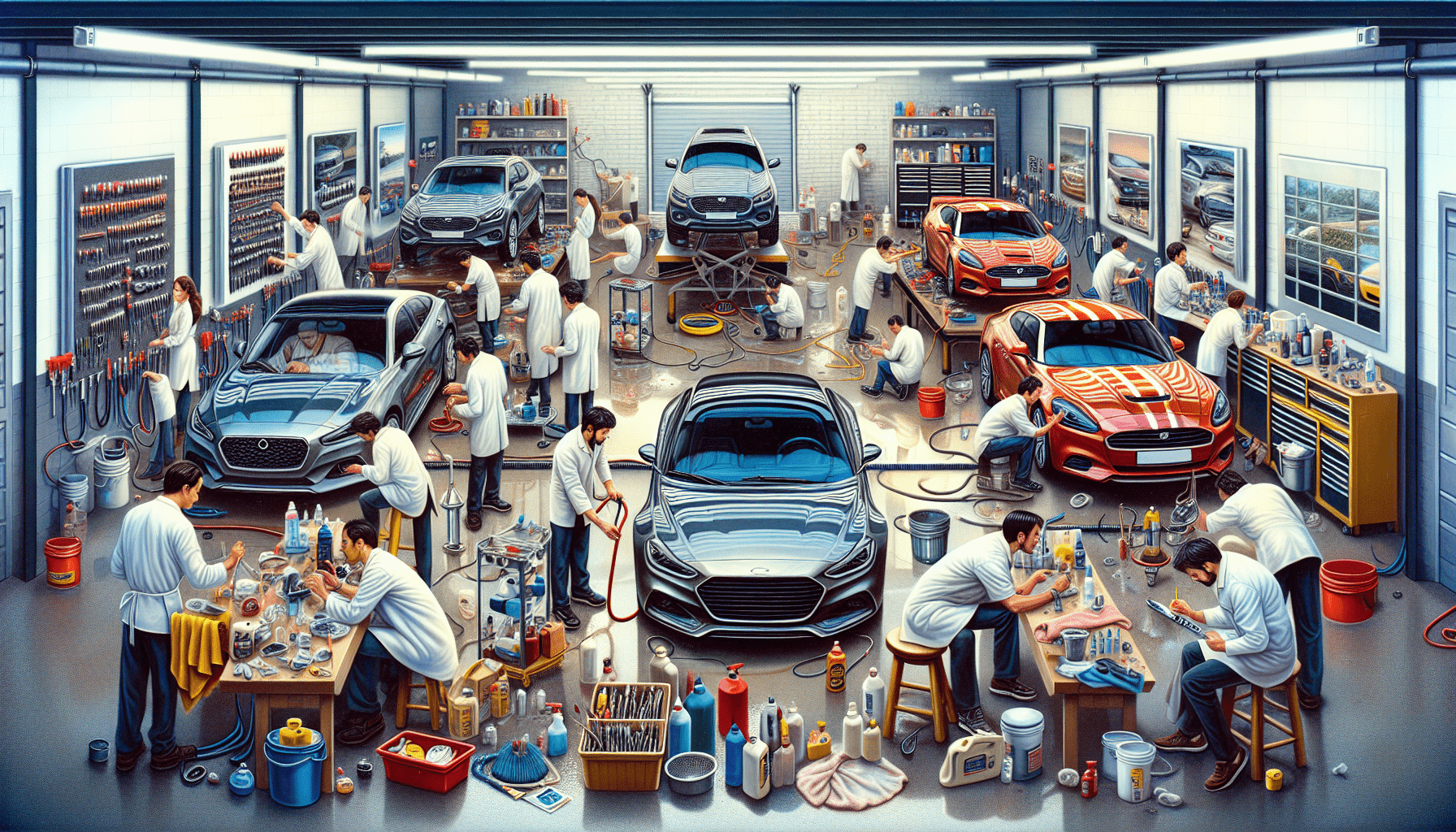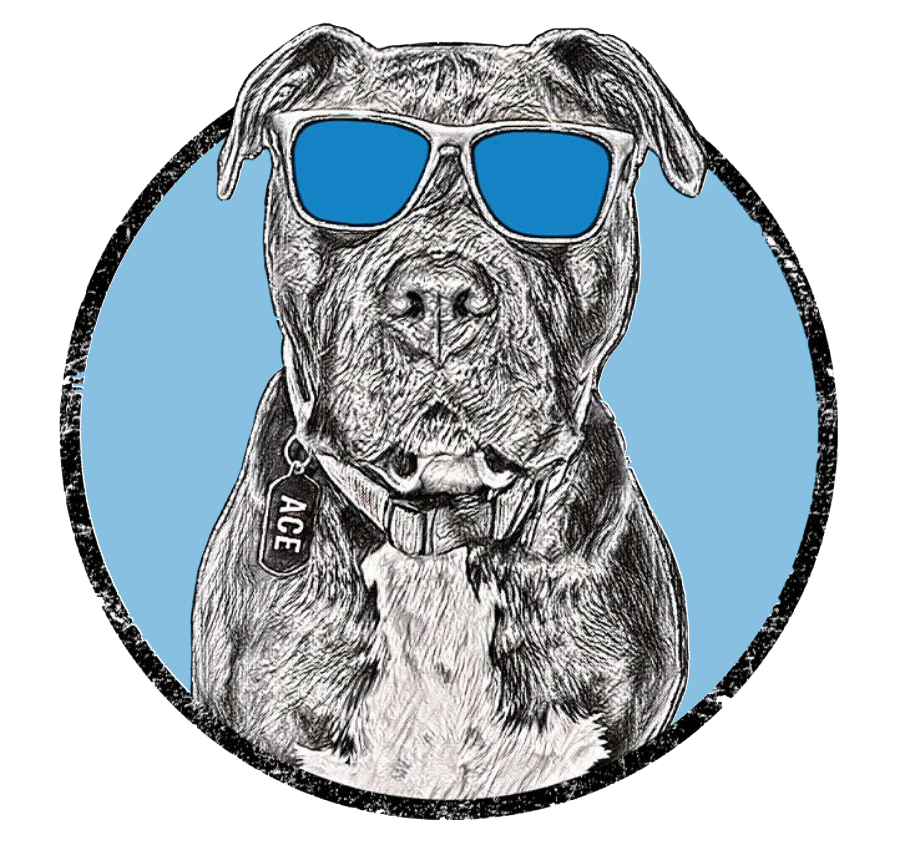Ace Mobile
Detailing

What Is Part Of Car Detailing?
If you’ve ever wondered what exactly is involved in car detailing, you’ve come to the right place. Ace Mobile Detailing, a professional shop based in Orange Beach, AL, is here to enlighten you. With their expertise in automotive detailing, boat detailing, RV detailing, aircraft detailing, and ceramic coatings, they are passionate about enhancing the appearance of your vehicles. From using top-notch products to make your car shine to ensuring their clients feel amazing while driving their freshly detailed vehicles, Ace Mobile Detailing takes immense pride in their work. So, if you’re curious about the ins and outs of car detailing, keep reading to find out what it encompasses.
Car detailing involves a comprehensive cleaning and restoration process that aims to enhance the appearance of a vehicle both on the inside and outside. It goes beyond a regular car wash and focuses on deep cleaning, removing imperfections, and protecting various surfaces of the vehicle. Car detailing can be divided into several categories, including exterior detailing, interior detailing, engine detailing, wheel and tire detailing, glass detailing, headlight restoration, paint protection, odor removal, leather care, and convertible top care.

Exterior Detailing
Washing and drying
The first step in exterior detailing is washing the vehicle to remove dirt, grime, and other contaminants. This is typically done using a high-quality car shampoo and a soft microfiber wash mitt or sponge. It’s important to thoroughly rinse the car after washing to ensure that all soap residues are removed. After washing, the vehicle should be dried using a microfiber towel to prevent water spots.
Claying
Claying is a process used to remove any bonded contaminants from the surface of the vehicle’s paint. This includes things like overspray, tar, bug splatters, and industrial fallout. A clay bar or clay mitt is used along with a lubricating agent to gently glide over the paint, effectively picking up these contaminants and leaving the surface smooth.
Paint correction
Paint correction is a more advanced step in exterior detailing that focuses on removing imperfections in the paint, such as swirl marks, scratches, and oxidation. This is done using machine polishing techniques and specialized compounds or polishes. The goal is to restore the paint’s clarity and gloss, making it look like new.
Polishing and waxing
Polishing and waxing are the final steps in exterior detailing that help enhance the shine and protect the paint. Polishing is done to further refine the paint’s surface, remove any fine scratches or swirl marks, and restore a deep gloss. Waxing, on the other hand, creates a protective layer on top of the paint, providing UV protection and making it easier to clean.
Interior Detailing
Vacuuming and dusting
The first step in interior detailing is to thoroughly vacuum the entire interior, including the carpet, seats, and other upholstered surfaces. This helps remove loose dirt, debris, and crumbs. Dusting is also important in this step, as it ensures that any dust or particles on surfaces like the dashboard, console, and door panels are removed.
Cleaning upholstery and carpets
Next, the upholstery and carpets are cleaned to remove stains, spills, and odors. This is typically done using specialized cleaning solutions or steam cleaners that can penetrate deep into the fabric. The goal is to lift dirt and stains and leave the upholstery looking fresh and clean.
Cleaning dashboard and console
The dashboard, console, and other interior surfaces are cleaned using appropriate cleaning agents. These surfaces can accumulate dirt, dust, fingerprints, and even grease over time. It’s important to use non-abrasive cleaners to avoid damaging delicate materials and finishes.
Window cleaning
Finally, the windows, mirrors, and windshield are thoroughly cleaned using a streak-free glass cleaner. This helps remove any dirt, smudges, and fingerprints, ensuring excellent visibility and a crystal-clear view from inside the vehicle.
Engine Detailing
Cleaning engine bay
Engine detailing involves a thorough cleaning of the engine bay to remove dirt, grime, and grease that can accumulate over time. This is done using specialized cleaning agents and brushes, ensuring that all areas are properly cleaned without causing any damage to electrical components.
Degreasing
After cleaning, degreasing is done to remove any residual grease or oil from the engine bay. This step helps restore the cleanliness of the engine compartment and provides a fresh start for applying a protective dressing.
Dressing rubber and plastic components
To finish off engine detailing, rubber and plastic components in the engine bay are dressed using a specialized product. This helps restore their appearance, making them look clean and rejuvenated.
Wheel and Tire Detailing
Cleaning wheels and rims
Detailing the wheels and rims involves removing brake dust, dirt, and grime that can accumulate over time. This is done using dedicated wheel cleaners and brushes that can reach all the nooks and crannies. Thoroughly cleaning the wheels not only improves their appearance but also prevents corrosion and damage.
Applying tire dressing
After cleaning the tires, a tire dressing is applied to enhance their appearance and protect against cracking and fading. The dressing gives the tires a rich shine and helps keep them looking new.
Polishing chrome elements
For vehicles with chrome elements, such as grilles or trim, polishing is done to remove any oxidation or tarnish and restore their shine. This is usually done using a chrome polish and a clean microfiber cloth.

Glass Detailing
Cleaning windows and windshields
Glass detailing involves cleaning all the glass surfaces of the vehicle, including windows and windshields, to remove dirt, grime, and fingerprints. This is done using a specialized glass cleaner and a lint-free cloth or glass cleaning tool.
Removing watermarks and stains
If there are watermarks or stubborn stains on the glass, a glass polish or detailing clay can be used to gently remove them. This step helps restore the clarity and transparency of the glass.
Applying glass sealant for protection
To add an extra layer of protection to the glass, a glass sealant can be applied. This helps repel water and dirt, making it easier to maintain clean glass surfaces.
Headlight Restoration
Removing oxidation and yellowing
Over time, headlights can become oxidized and develop a yellow or hazy appearance. Headlight restoration involves using specialized compounds and sanding techniques to remove the oxidation and restore clarity to the headlights.
Polishing and sealing
After removing oxidation, the headlights are polished to further enhance their clarity and shine. This step helps remove any fine scratches and brings back the original luster. Finally, a protective sealant is applied to prevent future oxidation and keep the headlights looking clear and bright.

Paint Protection
Ceramic coating application
Ceramic coating is a popular form of paint protection that provides long-lasting durability and hydrophobic properties. It creates a semi-permanent bond with the paint, forming a protective layer that repels dirt, water, and UV rays. Ceramic coating can significantly enhance the gloss and depth of the paint, making it easier to maintain the vehicle’s appearance.
Paint sealant application
Paint sealants are synthetic products designed to protect the paint from environmental elements, such as UV rays, bird droppings, and tree sap. They provide a sacrificial layer on top of the paint and can last several months. Paint sealants are typically easy to apply and provide a high level of protection.
Paint protection film installation
Paint protection film, also known as clear bra, is a transparent film that is applied to vulnerable areas of the vehicle, such as the front bumper, hood, and side mirrors. It acts as a physical barrier against rock chips, scratches, and other road debris, protecting the paint underneath. Paint protection film is self-healing, meaning that any minor scratches or swirl marks can disappear over time with exposure to heat.
Odor Removal
Deep cleaning of interior surfaces
To eliminate odors from the vehicle’s interior, a deep cleaning of all surfaces is necessary. This includes the seats, carpet, floor mats, and any other area where odors can linger. Using specialized cleaning products and techniques, the goal is to remove any trapped odors and give the interior a fresh and clean scent.
Using specialized odor neutralizers
In addition to deep cleaning, specialized odor neutralizers are used to target and eliminate specific odors, such as smoke, pet odors, or food smells. These products work by neutralizing the molecules that cause the odor, effectively eliminating the smell.
Deodorizing the air vents
To ensure that the air inside the vehicle smells fresh, deodorizing the air vents is important. This can be done using odor-neutralizing sprays or ventilation system cleaning treatments. By treating the air vents, any unpleasant odors circulating through the vehicle can be eliminated.

Leather Care
Cleaning and conditioning leather seats
Leather seats require regular cleaning and conditioning to keep them looking and feeling their best. This involves using a leather cleaner to remove any dirt or stains and a leather conditioner to moisturize and protect the leather from drying out or cracking.
Repairing minor cracks and scuffs
If there are any minor cracks or scuffs on the leather seats, they can be repaired using a leather repair kit. This typically involves filling in the damaged area, color-matching the repair, and sealing it with a protective coating.
Applying leather protectant
To further protect the leather from UV damage and staining, a leather protectant can be applied. This helps create a barrier against spills and provides an extra layer of defense against wear and tear.
Convertible Top Care
Cleaning and conditioning the fabric
For vehicles with convertible tops, proper care is essential to keep the fabric looking good and to maintain its waterproof properties. Cleaning and conditioning the fabric using specialized products helps remove dirt and stains while protecting the fabric from fading and deterioration.
Removing stains and water spots
If there are any stubborn stains or water spots on the fabric, additional spot cleaning may be necessary. This can be done using mild cleaners specifically formulated for convertible tops and gentle brushing to lift the stains.
Applying fabric protectant
To ensure longevity and durability, applying a fabric protectant is recommended. This helps repel water, prevent color fading, and provide UV protection.
In conclusion, car detailing encompasses a range of services that go beyond a regular car wash. From exterior detailing to interior cleaning, engine detailing to headlight restoration, there are various aspects to consider when trying to enhance the appearance and maintain the condition of a vehicle. Whether it’s through thorough washing, polishing, protection, or odor removal, professional car detailing can leave your vehicle looking fresh, clean, and rejuvenated.

